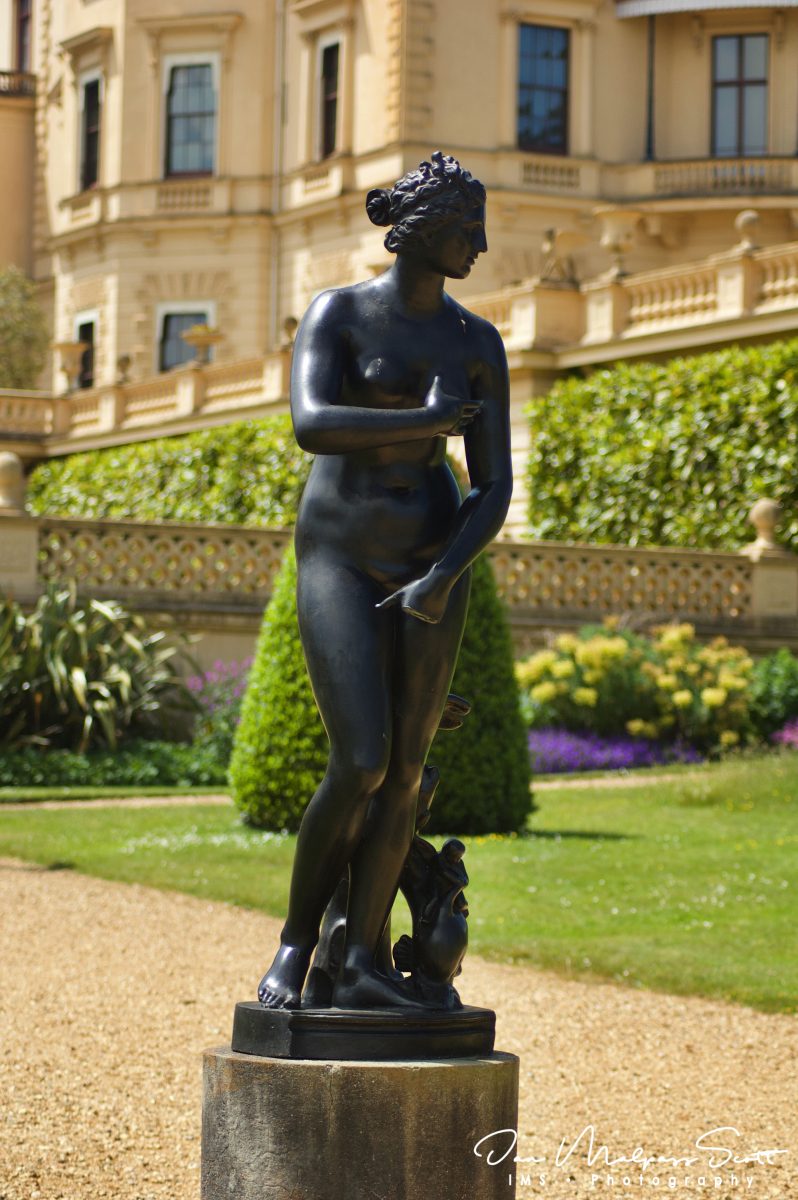![]()
M GEISS [BERLIN]
Venus de Medici 1850-59
Zinc | 159.0 x 41.0 x 42.0 cm (whole object) | RCIN 41828
Lower Terrace, Osborne House
In the 1850’s Queen Victoria and her consort, Prince Albert acquired a series of zinc cast statues based on originals from the antique for the gardens at Osborne House, their summer residence in the Isle of Wight. The statues were cast by the Berlin founders M. Geiss, who exhibited a bronzed zinc cast of stags in the 1851 Great Exhibition in London that were purchased by Prince Albert. Queen Victoria and Prince Albert acquired eleven zinc statues from M Geiss for Osborne House and these included Urania, Euterpe, L’Adorant, Ganymede, Venus of Capua, Meleager, Bacchus, Venus de Medici, Ceres, Medea and Venus d’Arles. This zinc full-length statue of a standing nude female represents Venus, the Roman goddess of love and fertility. She is depicted looking left, with her hair fastened in a knot at the nape of the neck, her left hand held in front of her pudenda and her right covering her breast, and leaning against a tree-stump in the form of a dolphin with amorini at her feet. The statue is a replica of the Venus de Medici, a Hellenistic marble from 1st century BC, which was recorded during the 16th century in the Medici collection. It became one of the most famous marble sculptures of classical antiquity, and was extensively copied and reproduced. This statue was presented by Prince Albert to Queen Victoria as a gift for her birthday on 24th May 1859.
Provenance
Given to Queen Victoria by Prince Albert on her birthday, 24th May 1859. [Victoria & Albert: Art & Love, London, 2010, pg 459]
Copy of antique marble statue in the Uffizi, Florence, which was formerly in the gardens of the Medici Palace and brought to Florence in the seventeenth century.


